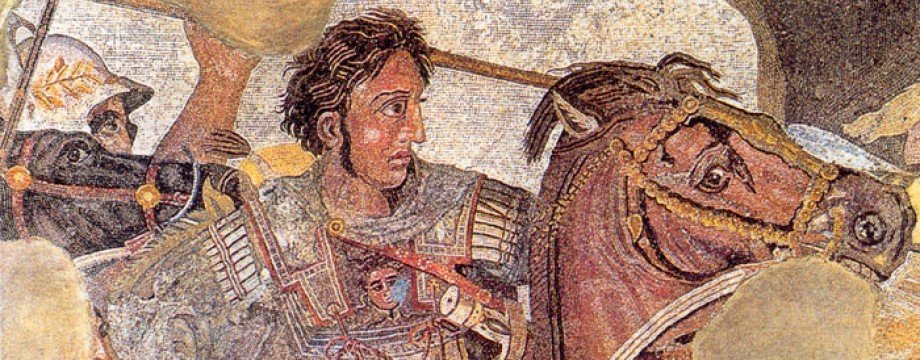Alexander the Great was born on, or around, 20th July 356 BC.
Of the five chief sources regarding his life, only one - Plutarch - covers his origins. He does so in the opening chapters of his Life of Alexander.
Chapter 2
Alexander’s Lineage
Plutarch notes that he was:
- descended from Heracles via Caranus on his father’s side
- descended from Aeacus via Neoptolemus on his mother’s side
Olympias’ Dream
- Just before her marriage to Philip II, Olympias dreamed that he womb was struck by a thunderbolt. It started a fire, which spread (a prefiguring, perhaps, of Aexander’s conquests)
Philip’s Dream
- After his marriage to Olympias, Philip dreamed that he closed his wife’s womb with a lion embossed seal (indicating, I think, Alexander’s character)
Ammon-Zeus
- Plutarch states that one day, Philip glimpsed his wife in bed with a snake
Chapter 3
The Delphic Oracle
- Olympias was a snake worshipper, but Philip still asked the Oracle what its presence meant. The Oracle ordered him to ‘offer more sacrifices and honour to Ammon than any other god’. The snake was Ammon.
- The Oracle also told Philip that he would lose the eye with which he saw his wife and the god together
The issue of Alexander’s paternity is shrouded in mystery. Did he really believe he was the son of Ammon-Zeus? Plutarch records two traditions. One, that Olympias told her son ‘the secret of his birth’ (i.e. that Ammon-Zeus was his father) but also that she ‘repudiated the idea’.
Around the same time as Alexander’s birth, the Temple of Artemis at Ephesus was destroyed by fire. According to Plutarch, Hegesias of Magnesia said that this was because Artemis was away: delivering the future conqueror! The Magi at Ephesus, however, had a different reason for the fire: it was an omen of the fall of Asia, that is, the Persian Empire.
Three significant events happened on or around the time of Alexander’s birth:
i. Philip captured the city of Potidaea
ii. Parmenion defeated an Illyrian army in battle
iii. One of Philip’s horses won at the Olympic Games
Philip’s soothsayers told the king that these events all pointed to his son’s invincibility.
As can be seen above, Plutarch’s account of Alexander’s conception and birth relies as much on myth and propaganda as it does history. This makes it of a piece with all the accounts of his life. Alexander was not only great on the battlefield, but also in the management of his image (to be sure, we may also say that this is true of his successors).
Alexander was born at Pella, capital of ancient Macedon. In his early years, he had one weakness: although he was Philip’s only credible heir, he was not a full Macedonian (Olympias was the daughter of Neoptolemus, king of Epirus). Had Philip lived longer and fathered a son with his last wife, Cleopatra Eurydice, who was a full Macedonian, that would have been a problem for Alexander, probably a fatal one.
However, Philip was assassinated not long after Cleopatra Eurydice gave birth to a daughter. In the blood letting that followed Philip’s murder - as Alexander eliminated anyone who could be a threat to his place on the throne - Olympias also killed Cleopatra Eurydice, and her daughter. This actually angered Alexander as she was no longer a threat.
As mentioned above, Alexander was born in 356 BC. In 336, he left Macedon for the last time and never looked back. In the next thirteen years, he conquered most of the known world and was planning his next expedition when he died in Babylon in June 323.
